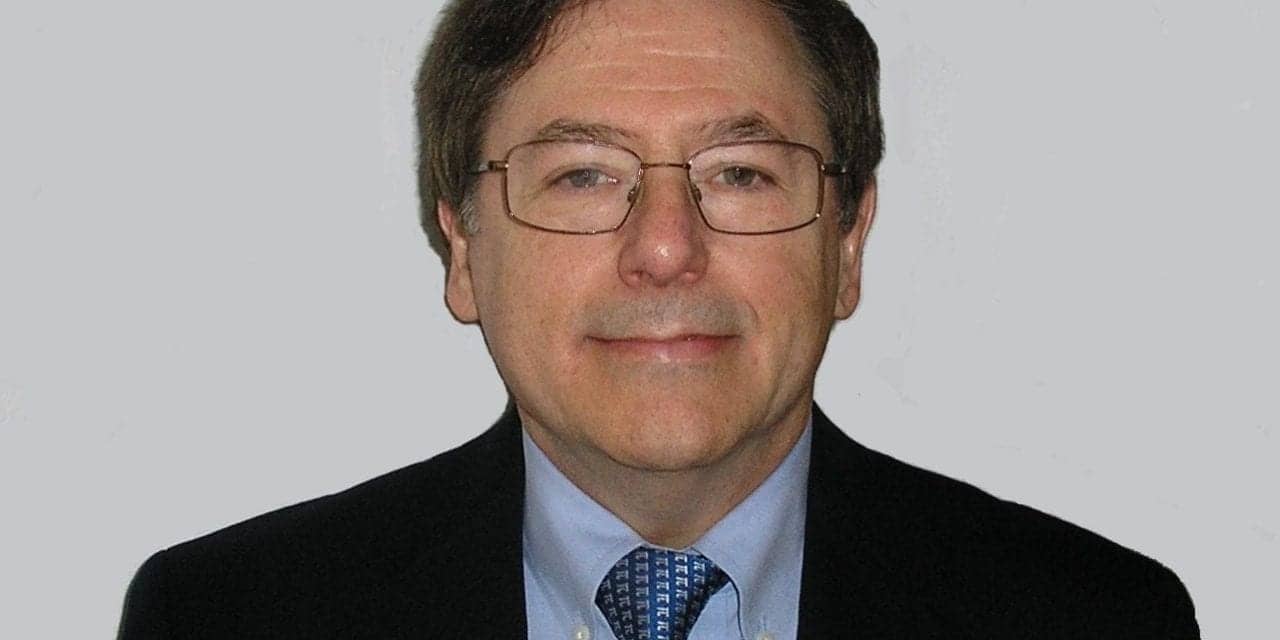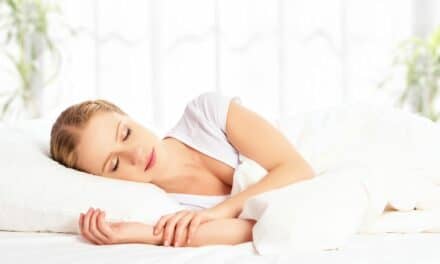Positive airway pressure therapy isn’t for everyone, says AASM award winner Richard Berry, MD, FAASM, who also shares his insights on positional therapies, neurostimulation, and interface selection.
By Lisa Spear
The sleep medicine subspecialty is a rapidly evolving field, and one that needs leaders and educators to cultivate the next generation. A practicing clinician and professor, Richard Berry, MD, FAASM, has stepped up to meet this need by contributing countless hours over the course of his nearly 35-year career to guide clinicians who are entering the field.
To honor his contributions and dedication, the American Academy of Sleep Medicine (AASM) awarded Berry with the 2020 Nathaniel Kleitman Distinguished Service Award. The award is presented to an individual who has made significant contributions in the areas of administration, public relations, and government affairs. The AASM announced the annual award winners in April.
“I’ve worked with a lot of wonderful people at the American Academy of Sleep Medicine and in getting this award I would like to thank the Board of Directors and staff,” says Berry, a past president of the AASM Foundation and the current deputy editor of the Journal of Clinical Sleep Medicine.
“I am very grateful for the experience of working with so many dedicated people.”
A professor of medicine and the medical director of the University of Florida (UF) Health Sleep Disorders Center, Berry has grown the UF & Shands Sleep Disorders Center from two to 12 beds and from performing 250 sleep studies yearly to currently more than 3,000 in-lab sleep studies and over 450 home sleep apnea tests per year. He accomplished this while leading the university’s sleep medicine fellowship program and starting the sleep program at the Malcom Randall VA Medical Center in Gainesville, Fla.
Berry is also the author of Sleep Medicine Pearls, a popular medical textbook, which examines a series of clinical cases.
Sleep Review spoke with Berry about the future of sleep medicine and how to best serve patients. The following Q&A has been edited for length and clarity.
How do you anticipate CPAP mask selection will evolve with the development of new technologies?
Berry: Mask selection and adjustment is one of the big challenges that we face when we are taking care of people. That’s one of the major obstacles. There’s technology now that actually scans patients’ faces and perhaps recommends masks that will fit them better. This is one area where we can make a difference. There’s already been progress and there will be a lot more. There will be more personalized, precision-fit masks.
What are some important factors in interface selection?
Berry: Careful mask fitting and educating the patient on how to adjust and clean the mask is very important. Testing mask seal under pressure, if possible, avoids sending a patient home with a mask that looks like a good fit but then leaks when tried at home. Many years ago, Glen Prosise and I published one of the first papers on use of full face mask (a mask that fits over the nose and mouth).1 Such masks are definitely useful but they have their limitations.
One patient I had was using a mask over his nose and mouth because that is what he used during his titration. He was on fairly high pressure although quite thin. He complained that the mask was leaking and waking him up. We tried several masks but were unable to find a good fit. About a year later, he came back to see me and he had gone to another sleep center and they had changed him to a nasal mask. And, guess what? He required a lot lower pressure and had a lot better seal and liked it. So in other words, he was someone who absolutely did not need a full face mask and could be converted to a nasal mask and that taught me a big lesson. Try to use a nasal mask if possible.
[RELATED: On-Demand Webinar: CPAP Masks: You Never Get a Second Chance to Make a First Impression]
What is a reasonable adherence rate for CPAP?
Berry: The traditional statement is that about half the people who start on CPAP will adhere to treatment. Those rates are higher in some populations. If you work really hard, it can be more like 70%. It is still a challenge. Many physicians obsess about mild elevations in the residual AHI [apnea-hypopnea index] but getting the patient to use CPAP the entire night is more important. However, CPAP is not for everyone and we need other treatments. Current alternatives include positional therapy, surgery, oral appliances, and nerve stimulation therapies. There is also active research on medications to maintain upper airway muscle tone during sleep. Hopefully, a clinically useful and well-tolerated medication will be found in the future.
What is the future of positional therapy for obstructive sleep apnea?
Berry: I do think that there is a segment of the population who could be well treated with a positional device. There is certainly a segment of the population that if they stay off their back during sleep, their sleep apnea is very mild. We conducted a study [published in the Journal of Clinical Sleep Medicine] in which it showed promise.2
We haven’t had very good devices until recently. It is important to have devices that can record adherence, so we really know that the devices are being used and how successful they are at keeping people off of their backs. And, also, these devices need to be comfortable, so there’s been a lot of progress with that recently. And there have certainly been studies showing efficacy, but there probably needs to be more long-term studies. The question going forward is: What is the long-term adherence with these devices?
Do you have any advice for other clinicians who might want to begin prescribing positional therapy for their obstructive sleep apnea patients?
Berry: A lot of the devices now have cloud-based information, so you can monitor how well the device is being used. That’s important—to see if there is a clinical benefit.
What is your opinion of the use of devices that use neurostimulation for the treatment of obstructive sleep apnea?
Berry: It is not for everybody, but I do think there is a segment that do really well with it. The price is the major issue. Getting insurance to authorize it is sometimes a challenge and it depends on the insurance. Sometimes it works really well. We do it at the University of Florida, and I have had several patients who have done well with it.
You need to work collaboratively with the surgeon. And you need to monitor the patients for any changes in their sleep. So, for instance, if someone is suddenly not having restorative sleep or snoring, they may need another study or an adjustment of their voltage. The program so far is very successful and there is ongoing research in it and, to my knowledge, studies have shown effectiveness is maintained.
Lisa Spear is the associate editor of Sleep Review.
References:
1. Berry RB, Prosise GL. Oral-nasal continuous positive airway pressure as a treatment for obstructive sleep apnea. Chest. 1994 Jul;106(1):180-6.
2. Berry RB, Uhles ML, Abaluck BK, et al. NightBalance sleep position treatment device versus auto-adjusting positive airway pressure for treatment of positional obstructive sleep apnea. J Clin Sleep Med. 2019 Jul 15;15(7):947-56.




